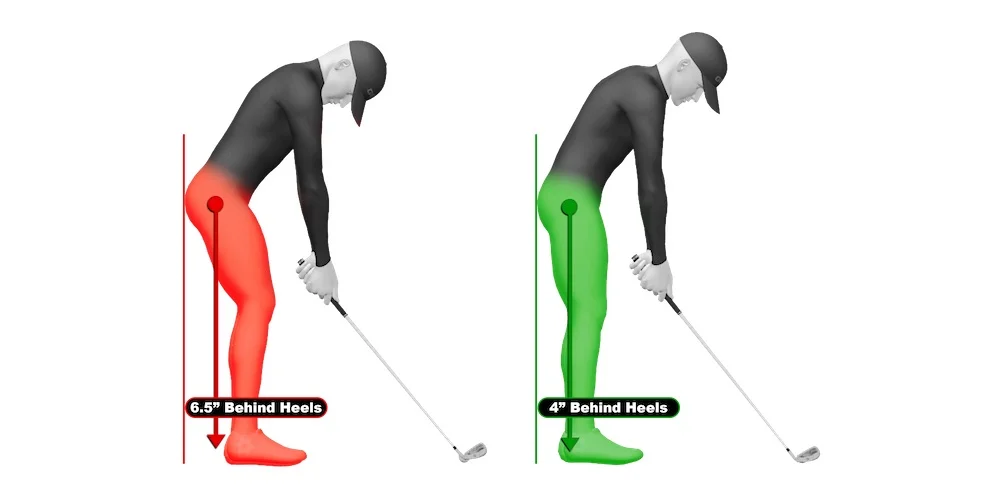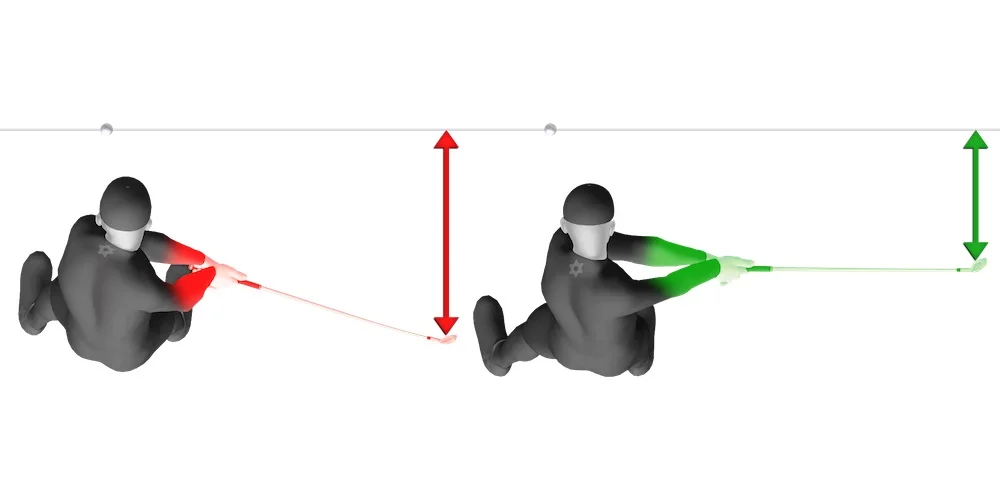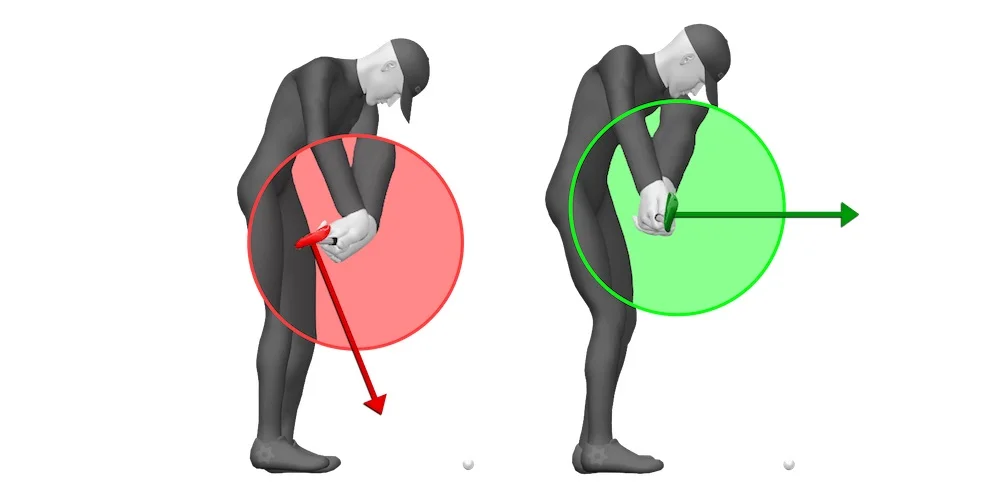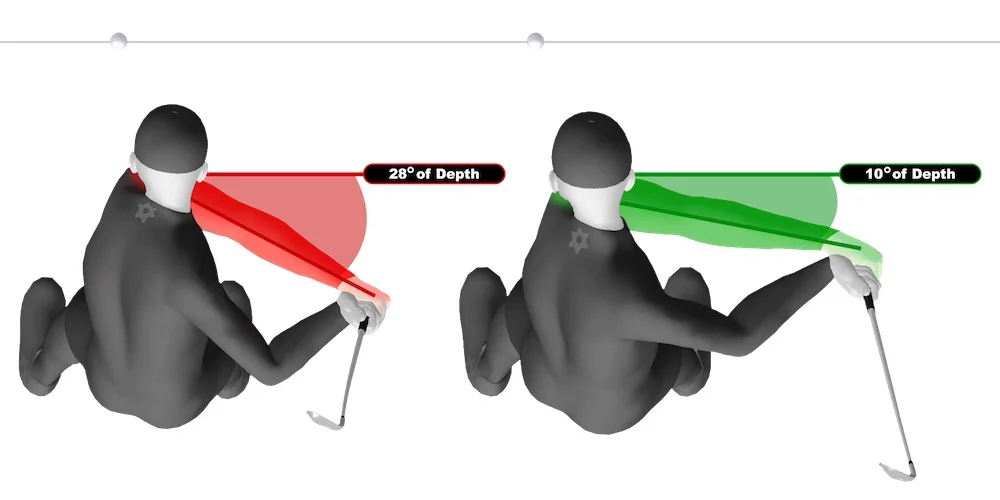While searching for a picture of a good set-up position I stumbled across this article, The 10 biggest golf swing killers. Out of those ten, I chose four to focus on. I promise that if you can improve these few things, you will see a big improvement. Enjoy and keep it simple.

1. “Sitting at Setup”
For years popular instruction has espoused adopting a posture with a “sitting-on-a-barstool” look. That posture, however, places a lot of mass behind your heels. It’s very difficult to move athletically from such a position, because the tendency is to compensate by rocking toward your toes during the backswing as you search for balance. Adopt the setup at far right. Address the ball with your hips over your ankles, which will prevent you from rocking your weight back and forth. Instead of picturing yourself sitting on a barstool, imagine that you’re looking over a picket fence. That’ll fix any balance and weight issues

2. Swinging the club inside
Check the images above: The pro (green) has kept the shaft parallel to the target line during the takeaway. This contrasts the killer takeaway move, which is to whip the club “inside” the target line. When this happens, you’ll be late in lifting the club to the top, a precursor to coming over the top on the way down (hello, slice). To fix it, lay an alignment stick on the ground just in front of your toes.

3. Overly shut club face
A seemingly logical solution for golfers who want a square face at impact is to not let the face rotate open in the takeaway.
The problem is that doesn’t work, and will almost guarantee you have a harder time squaring the face when it counts — down at impact.
Trying to keep your club face pointing at the ground or the ball will force you hands and arms to do things that will hinder you later in the backswing and make squaring the face in the downswing extremely difficult.
Instead allow the club to open a bit as you swing the club back. A good rule of thumb to look for the face to be point parallel or just slightly less than parallel to the ground at this point in the backswing. Do that, and you’ll start to develop a backswing motion that will make your downswing simpler and more consistent.

4. Fishing for depth
Trying to pull your lead arm deep behind you early in the backswing is a trend we see cause a lot of issues.
Our two golfers here are at left arm parallel in the backswing. Notice how the amateur has more than doubled his left arm depth compared to our pro. This tends to cause a loss of width and an overly bent right arm as you reach the top.
When that happens, your rotation will suffer and you’ll be forced to make several compensations in your downswing.
Instead, try to preserve as much width as possible going back allowing your turn to take care of the depth. You’ll have a much more powerful downswing when you do it.
I recommend stopping here and just working on these four items, but if you want to read the entire article, you can find it here: 10 biggest golf swing killers, according to state-of-the-art technology
